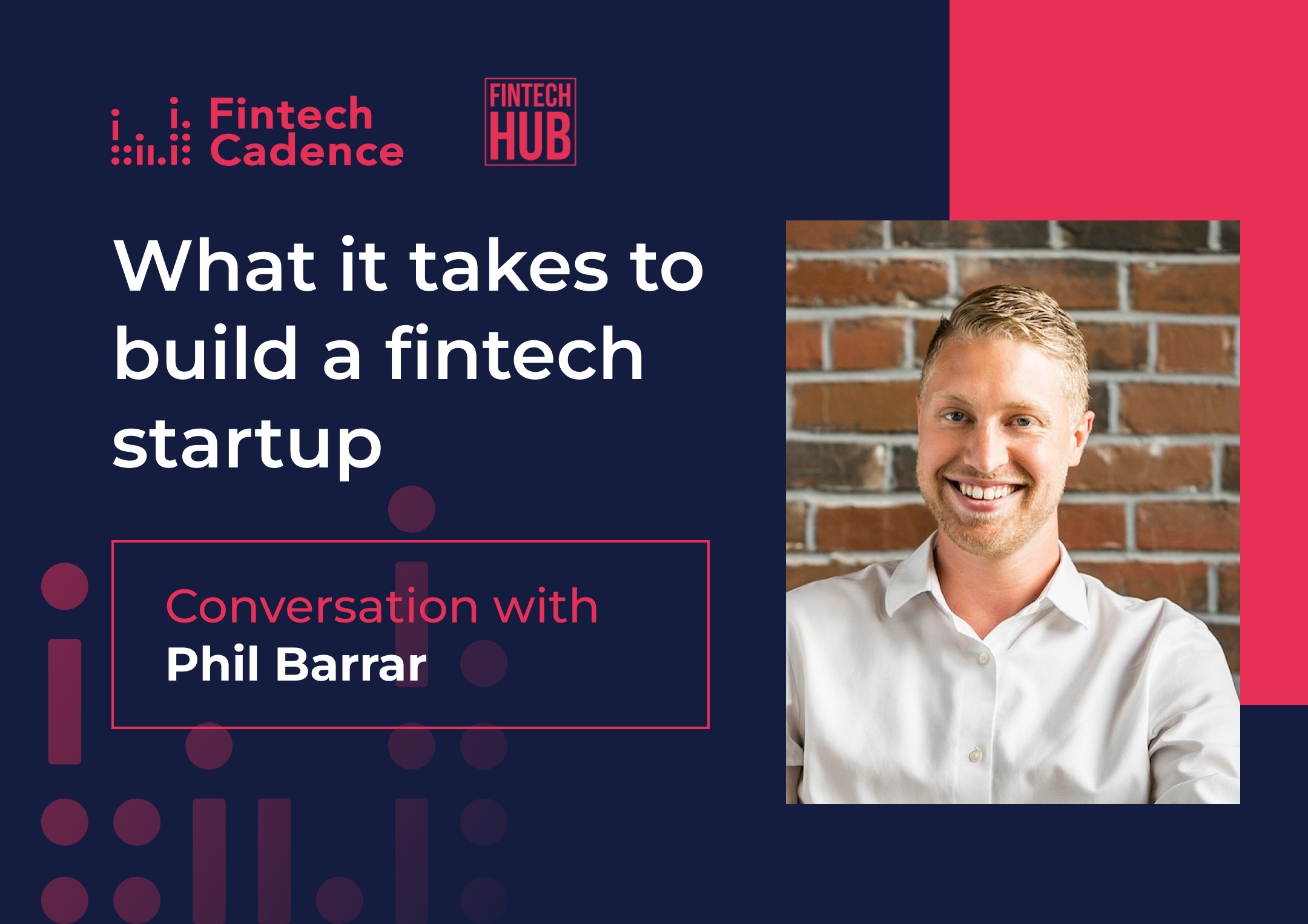Co-authors: Phil Barrar and Skyla Valade.
What It Takes To Build A Fintech Startup: Thoughts From Our Fintech Hub Event with serial fintech founder Phil Barrar.
Building a fintech startup presents a unique set of challenges, many of which were discussed in our recent Fintech Hub Open Chat & Workshop with industry leader and serial fintech founder Phil Barrar. We explored the major steps of the process and the role of fintech in building more accessible and affordable products for the everyday consumer.
The Recipe for Success
Throughout the workshop, our guest shared takeaways learned through their personal experience in the fintech industry. These takeaways come together harmoniously as a useful checklist for any fintech founder.
- Building trust with the consumer is essential, which includes strong security practices but often relies more powerfully on design and user experience.
- Pricing your product correctly doesn’t always mean going low, it’s crucial to consider and reconsider pricing throughout your journey.
- Make your value proposition potent and quick. You should understand how to communicate your value proposition in 15 seconds.
- Your onboarding needs to be as frictionless as possible, anything you can do to make it easier is worth considering. Every click counts.
The Key Milestones for Your Fintech Startup
Step 1: Creating a Minimal Viable Product
No matter what form this takes, creating your MVP is step 1 in the fintech journey. This could be a spreadsheet, a design, a fleshed-out document, but it needs to showcase what you’re trying to build effectively. You can share this MVP with friends and people in your network to get early feedback and see if anyone can challenge your assumptions.
Step 2: Customer Discovery
Customer Discovery is the next stop in your roadmap, and allows you to understand your audience. This phase consists of data gathering, surveys, conversations, industry research, and more. You want to build confidence in your understanding of who exactly your product is for, and ensure that people find value in the idea. This step also gives you a valuable opportunity to start considering your major customer segments.
Step 3: Validating the Business
At this stage, it’s time to validate your business by building the basics. Make sure your thoughts, ideas, and direction are all documented, and get started on:
- Building detailed financial models
- Building a wireframe or mockup of your product, what you want the customer experience to look and feel like
- Start building a minimally viable brand
- Creating a refined pitch deck to communicate your idea outwardly
Step 4: Setting Up the Business
When your idea is validated and strengthened, you can move on to truly setting it up. Using tools like AngelList and Fintech Cadence can help support your legal and financial structure. This step may feel like the “boring business stuff,” but it can have the biggest overall impact on your business later on, so it deserves your full care and attention.
Step 5: Building the Team
Build a strong, reputable team of Engineers, Designers, Marketers, and Advisors. At this stage of your business, you’re looking for ways to keep your team lean but motivated, which means that building equity incentive programs may be a great option for you to explore.
Step 6: Managing Vendors & Partners
Picking the right vendors, partners, and service providers makes all the difference not only to your journey, but to the end product itself. Many key tools like AWS, G Suite, Shortcut, Bitrise, and Auth0 have startup programs that you can take advantage of. Other supplier relationships can be negotiated, and you can start building long-term relationships with vendors you really value.
Step 7: Fundraising
If you’re planning to raise money, creating a detailed fundraising forecast is essential. Financing is complex, and it’s important to be thoughtful of how and where you’re raising money. Create investment criteria and keep in mind the goal of your fundraising: each round should aim to unlock the next level. For example, at the Seed level, you’re validating the ability to put your team together along with a solid product. At Series A and B, you’re validating the ability to grow the company and establish solid unit economics.
Step 8: Pitching Investors
In order to validate and unlock each of these levels, you need to consider who is at the table with you and select investors that are adding value. Think about who you want to be there when your company is facing its toughest challenges— it’s at those moments where the value of your well-selected investors will shine through.
If you want the right investors, you need the right pitch. Knowing your pitch backwards and forwards is necessary, but also knowing the messages you want potential investors to be walking away with. What do you want them to remember? Prioritize the top of that list when structuring your formal pitches and informal conversations. The right investors can be found anywhere, and you’ll likely need to start by networking, networking, networking— so having these takeaways top of mind ensures that you won’t miss a beat or an opportunity.


